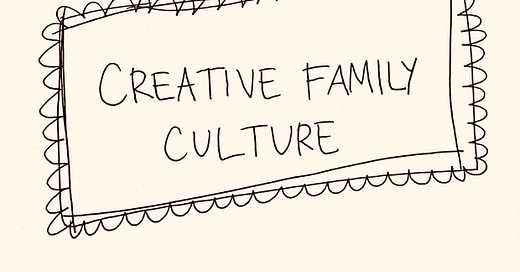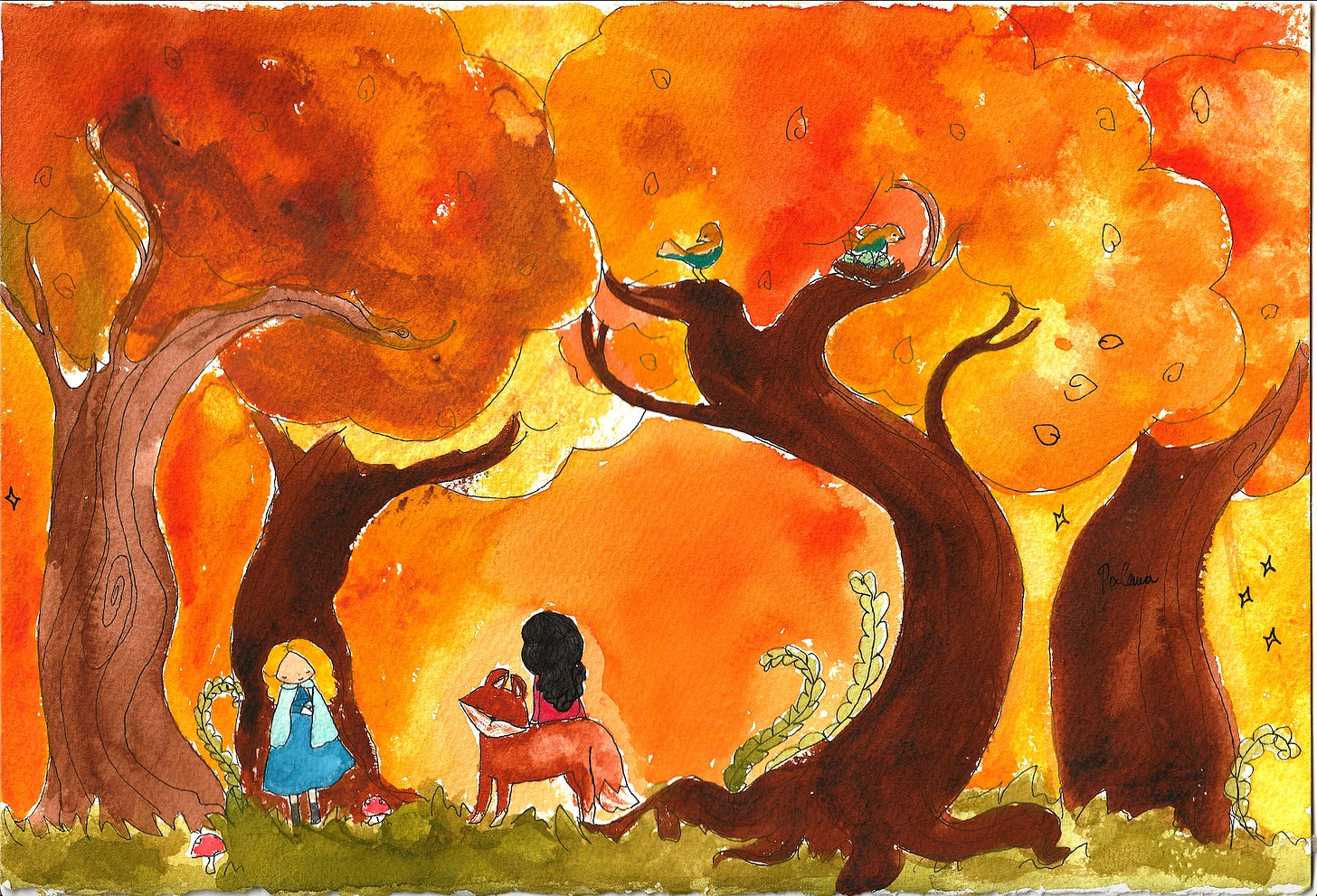Our family is big and conspicuous. My husband and I have nine kids (soon to be ten), ages 1-17, and strangers are always speculating aloud about what our life is like, how we do it, how does it work, etc. But when they get to know us, one thing that often comes up in conversation is how creative we are. We are a family of songwriters and performers, artists and creators, builders and dreamers, speakers, bakers, writers, and makers of all ages and sizes.
I believe, like many other thinking people, that creativity is one of the most important tools we can give our children in a world where they are being fed a steady stream of mind-numbing entertainment and scrolling their childhoods away. I will say I don’t pretend to be a scholar or an expert on the subject. I’m just a mother who has carefully observed my own life and children, and over the years, I have developed some ideas about making a home that fosters creativity.
So, in no particular order, here are some of my first thoughts about how to build a creative family culture.
Untethered time. In order to be creative, kids need heaps of free time. Not just one day a week, but most days, there needs to be time for leisure. Time to think, to dream, to imagine, to play, to practice. Not only do they need time, but they need a specific kind of time where their minds are unhooked from the the tether of the online/always-available world. Hours without screens, without texting, without tv. Set aside some time every day, if possible, where these distractions are not an option. This will greatly increase the capacity for your children to be inventive and creative.
Show by example. Spend time in your own life cultivating a creative passion. Pick one thing, or many, but let your children see you working at your own creative work. Learn to make a beautiful loaf of bread or keep a journal, knit, paint, start a blog, take photographs, write letters, sew a quilt, etc.
Be a constructive critic of the media you consume. When you watch movies, listen to music, read stories, etc., talk about the things you love and why. Talk about parts that you didn’t like and why. If there is a song lyric that just goes straight through your soul, stop and play it again and tell your children why. This is a natural way to give your children tools to discuss what makes art good, useful, beautiful.
Process and practice is productivity. Becoming skilled at anything takes time. Remember that putting in the work and time is productivity. It may be years before a child hones his skill enough that it can be a real value to others, but the hours are necessary for the growth of the artist/writer/musician, etc.
There is no wrong way to draw. We often put too much emphasis on children drawing in a particular way—being able to copy a simple figure or following a prescribed set of instructions. But kids know instinctively how to draw. They develop their own style, include their own details, and communicate volumes with their unique marks on paper. Kids are intensely creative, and you can see it in their drawings. The best thing we can do is help them keep that creativity and confidence alive. When they draw something, celebrate it. Ask them to tell you all about it. Your children will grow as artists, and as a bonus, you will learn so much about the way they think and feel in the process.
Prioritize creative work over busywork. Put out a bucket of good colored pencils and paper or watercolors. Make spaces where musical instruments can be played. Supply new journals and pencils for writing. Have bins of blocks for building. Give children the incredible life-skill of learning to choose how they will stay busy doing work that matters to them.
Resources and relationships: When you see the fire in your children’s eyes about something new, in addition to helping them get started, look for resources and relationships that can further their understanding of the skill they want to learn. Put books on hold at the library. Watch tutorials. Look for people in your community who are doing the thing your child loves and make connections.
Mess is part of the creative life. I wish my house was cleaner and more organized. And I aspire to it. But I also know that at some times, I just have to let things be a mess. If nine children are working on creative work all at once, that means there are stacks of paper and pencils everywhere, a floor full of wooden blocks, fabric strewn across a bedroom, someone banging with a hammer and nails, instruments dragged out of cases, little pieces of cut-up-paper for a board game prototype, flour everywhere in the kitchen from a batch of homemade scones, etc. It is loud, it is a mess, but things will get quiet and put away, and we will do it all again tomorrow. This is a good life.
Creative rhythms, like people, change. Just because your child loves origami now doesn’t mean he will always love it and will devote his life to it. But he will learn skills that will transfer over to new creative passions. Sewing by hand may give way to machine. Children who love to play piano may switch to guitar. A child may love writing and then switch her passion to darkroom photography. But all creativity is connected. Themes will emerge across disciplines. And many earlier loves and passions will be revisited throughout a lifetime. Giving a child a wide range of devices for expressing her thoughts, feelings, and ideas will provide stability and confidence in challenging seasons of life.
There is no pressure to know what you are doing when you start. The creative life is about exploration and learning as you go. The best way is to enter into it like a child does—eager to try something new, in the spirit of play, and with the ability to adjust your expectations as you go.
Friends,
Thanks so much for being here. May you find some time this week to unhook your mind from the constant chatter of the online world and think, imagine, dream, and create. Alone or alongside your children. I promise you, you won’t regret it. I love writing these weekly letters. Truth be told, these weekly appointments are my own untethered time where I desire to meet with God, and to look deeply inside myself. The words that flow out of this time help me through my life. And it is my great hope that God can use these words to be an encouragement to you as well.
Sending love and lots of big, fat drops of unexpected summer rain,
Mackenzie
From the Family:
Want to learn a little more about my family? I am married to Randy Chester, a singer-songwriter/mad-scientist musician. Here he is, with a few of our children (and me):
Meet Rosanna, my oldest daughter (age 17) who is currently recording her first album (to be released late summer!) of original songs:
Meet my daughter, Paloma, through the whimsical art of her journals. (Now available in our online shop.)
More introductions to come. You can see more videos of our children playing music on Randy’s youtube channel and learn more about
on her substack.From the podcast:
Here is a podcast episode my daughter, Rosanna, and I recorded back in February of this year, all about living in a big creative family.
And here is a picture my four-year-old drew this morning of himself happy (top) and with a cold, shivering (bottom). He also drew two pictures of his baby brother beside him (when he’s happy and sad).









As a fellow creative mom to multiple kids, I really love this post! Also, I listened to Rosanna's song and am so blown away by her songwriting and musicianship! Seriously. I can't wait to see what she goes on to write and sing!